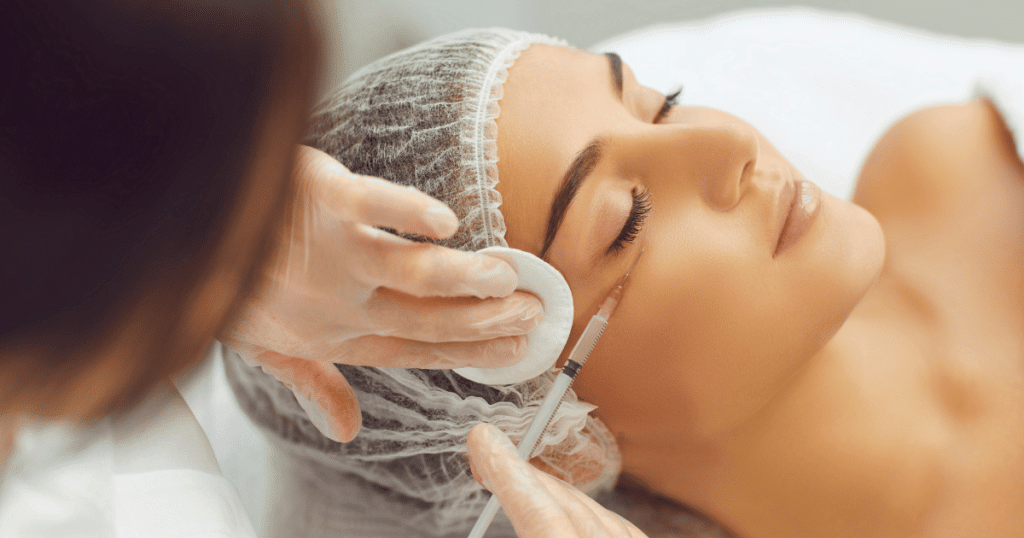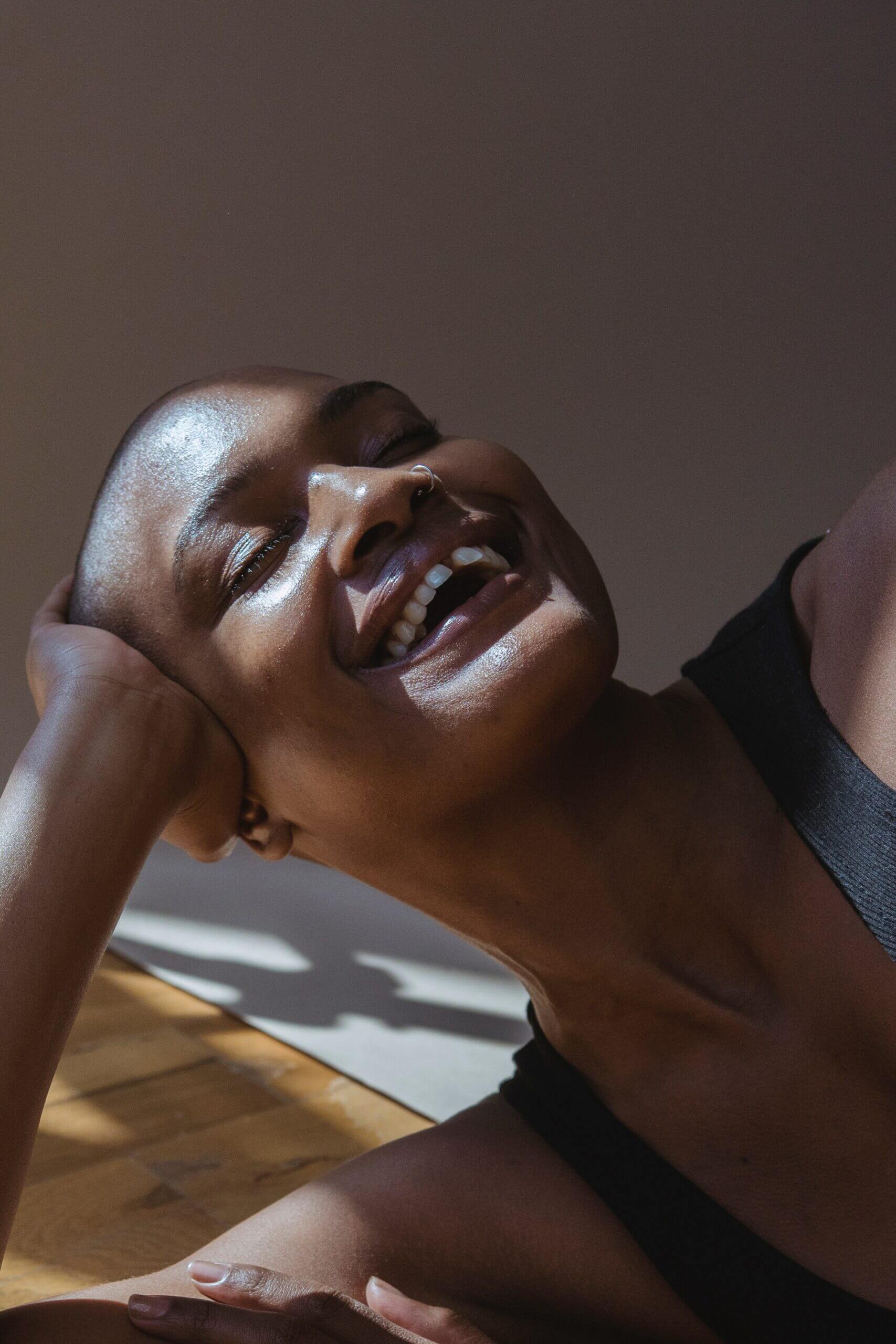Cosmetic procedures are becoming a go-to solution for people seeking to rejuvenate their appearance and enhance their natural beauty.
Two procedures leading this trend are Botox and fillers, each offering unique benefits to address aesthetic concerns and enhance your confidence.
Botox: synonymous with wrinkle-reduction
Fillers: known for restoring volume
This article aims to demystify these popular cosmetic treatments, giving you a comprehensive understanding of what Botox and fillers are, how they work, and how they differ.

What is Botox?
Here’s a detailed breakdown of Botox:
- History: Originating from the bacterium Clostridium Botulinum, Botox initially found use in treating medical conditions involving muscle weakness. It was a significant medical breakthrough that helped many patients. Its cosmetic use took off after it was found to effectively reduce the appearance of wrinkles and fine lines, revolutionizing aesthetic medicine.
- How it works: Botox injections function by interrupting signals from nerves to particular muscles. This innovative process reduces muscle activity and softens the look of dynamic wrinkles when injected into the area. Common areas of treatment include forehead wrinkles, frown lines, and bunny lines, resulting in a more refreshed and youthful appearance.
- What it treats: Besides being a remedy for dynamic wrinkles, Botox is also a solution for excessive sweating, medically known as hyperhidrosis. In recent years, Botox has gained popularity not just for its cosmetic benefits, but also for its diverse therapeutic applications, proving its versatility in the medical field.
Procedure Details: The average process involves the provider cleaning the treatment area, followed by the injection of Botox using a fine needle. Ice packs are often applied afterwards to minimize swelling. The effects of Botox typically last three to four months, after which the muscles gradually return to their normal function.
What are Fillers?
Fillers, also known as dermal fillers, are substances injected into the skin to restore volume loss, smooth lines, or enhance features like lips. With the primary ingredient often being hyaluronic acid, a substance naturally occurring in our bodies, fillers offer a safe and effective way to maintain a youthful appearance.
Let’s delve into the details of fillers:
- History: Initially, collagen was used as a filler, but over time safer and more effective substances have been developed. Today, the most popular types of fillers are hyaluronic acid fillers, calcium hydroxyapatite, and Poly-L-lactic acid. As research and technology continue to advance, we can expect to see even more effective and tailored filler options in the future.
- How it works: Filler injections restore volume under the skin, smoothing out static wrinkles – lines that are present even without facial expressions. They can also add volume to areas like the cheeks and lips. Moreover, due to their unique ability to attract water molecules, hyaluronic acid fillers can also help hydrate the skin, promoting a healthy, glowing complexion.
- What it treats: Fillers are versatile, addressing a range of issues from deep lines, such as nasolabial folds and marionette lines, to enhancing lip volume. Beyond aesthetics, fillers can also be used to correct facial deformities or asymmetries, offering a minimally invasive alternative to surgery.
- Procedure Details: Similar to Botox, the filler procedure involves cleaning the area, followed by the injection of filler using a fine needle or cannula. Some fillers contain a local anesthetic to minimize discomfort. Recovery time is usually quick, and the effects can last from 6 -18 months, depending on the area the filler is injected.
Botox vs Fillers: An Unbiased Comparison
To help you understand the key differences between Botox and fillers, we have prepared a side-by-side comparison table. In our analysis, we include factors such as usage, effectivity, risks, side effects, and costs associated with each treatment.
| Factors | Botox | Fillers |
| Usage | Primarily used to reduce the appearance of expression lines | Often used to fill deep folds, smooth out acne scars, or enhance facial features |
| Effectivity | Takes effect in 14 days, lasting 3-4 months | Immediate |
| Risks | Potential for mild bruising or droopy eyelids | Possibility of minor bruising or swelling |
| Side Effects | Temporary redness or minor swelling at the injection site | Temporary redness, swelling, or tenderness at the injection site |
| Costs | Typically less expensive than fillers | Costs can vary greatly depending on the type and quantity of filler used |
Factors to consider when choosing between Botox and fillers
- Desired results: Do you want to smooth out expression lines or fill in deep folds? Botox is best for the former, while filler is typically used for the latter.
- Longevity: If you are looking for a more lasting effect, fillers may be the better option.
- Budget: Generally, Botox tends to be less expensive than fillers.
- Risks and side effects: Consider your personal tolerance for potential side effects and risks associated with each treatment.
- Treatment Time: How much time are you willing to devote to the treatment? While both procedures are relatively quick, there may be a slight difference in treatment times.
- Pain Tolerance: Both treatments involve injections, so consider your comfort level with minor pain or discomfort during the procedure.
- Post-Treatment Care: Botox and fillers might require different levels of post-treatment care. Make sure you understand what will be required of you after the treatment.
- Personal Health: Your overall health can affect how you react to treatments. Discuss any health concerns with your healthcare provider to ensure the chosen treatment is safe for you.
- Frequency of Maintenance: Consider how often you’re willing or able to return for maintenance treatments. This could influence whether Botox or fillers are the right choice for you.
- Results: Consider how natural you want the results to look. Some people find that Botox offers a more natural look, while others prefer the volume that fillers can provide.
- Lifestyle: Your lifestyle can play a role in your decision. For instance, if you’re frequently in the sun, fillers may break down faster, making Botox a better option.
Remember, it’s essential to consult with a professional provider before deciding. Laserbody MD has lots of qualified professionals who are prepared to guide you through the process, no matter what you decide.
Patient Outro
Both Botox and fillers offer viable solutions to combat signs of aging and enhance your appearance, whatever your goals may be. The key differences lie in their usage, effectiveness, and cost.
Botox is primarily used for expression lines and is generally less expensive. On the other hand, fillers, which can be either natural or man-made material, are often used to address deep folds, acne scars, and to enhance facial features.
No matter what, it’s crucial to consult with a healthcare provider to understand which treatment is best suited to your needs and circumstances. Ultimately, whether you choose Botox or filler, both treatments can help you achieve a more youthful and rejuvenated appearance.
Contact our knowledgeable staff today and Laserbody MD would be happy to answer any questions you have in a free consultation!
















